Marching Into An Active Volcano With The Sulfur Miners Of Ijen, Indonesia

"You lost sir? Follow us."
Two men emerge from the dark beside me like a mirage, puffing clove cigarettes and twirling large bamboo shoulder baskets over their heads. Their names, they say, are Addis and Sukarno, and they will show me the path into Ijen crater.
It's a few minutes after 4 a.m., and not five minutes earlier, my "English-speaking guide," [who didn't speak a lick of English], had dropped me at a grassy knoll in this remote corner of East Java's puffing interior with one less-than-illuminating instruction: "walking." With that, he pointed along a line perpendicular to the road and drove off.
The facts about the path ahead, as I know them, are as follows: The long walk into Ijen crater will include sharp drops, slippery steps and a toxic lake that claimed the life of a French backpacker a few years ago. At 2,600 meters (8,530 feet), Ijen is also a working mine where men carry up to 100 kilos (220 pounds) of sulfur by hand out of the noxious crater and down the volcano's outer slopes to a weigh station as many as three times a day, six days a week.
Addis and Sukarno are two of those men.
Addis explains that he and about 300 other sulfur miners make the 3.5-kilometer (2.2-mile) trek into Ijen's smoky abyss each day to bring up as much mustard-yellow sulfur as their backs can bear. In exchange for this bone-crunching work, Addis, Sukarno and the others can expect to earn between $10 and $15.
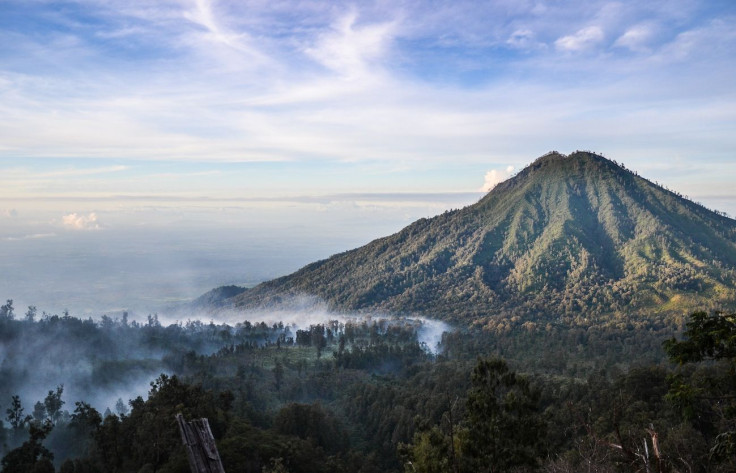

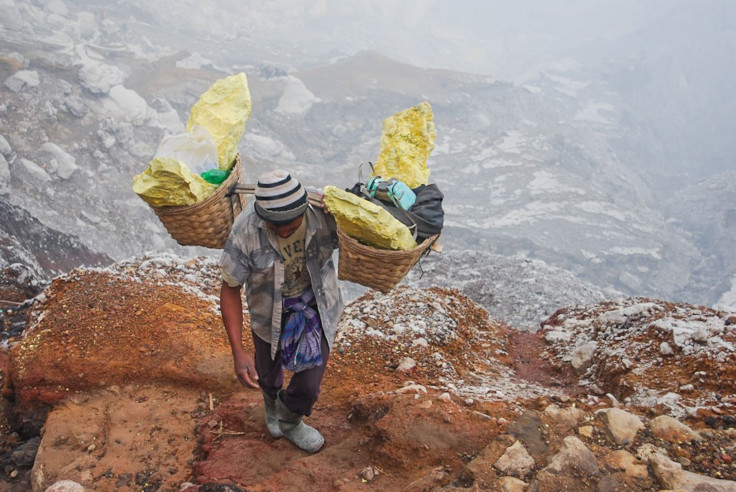
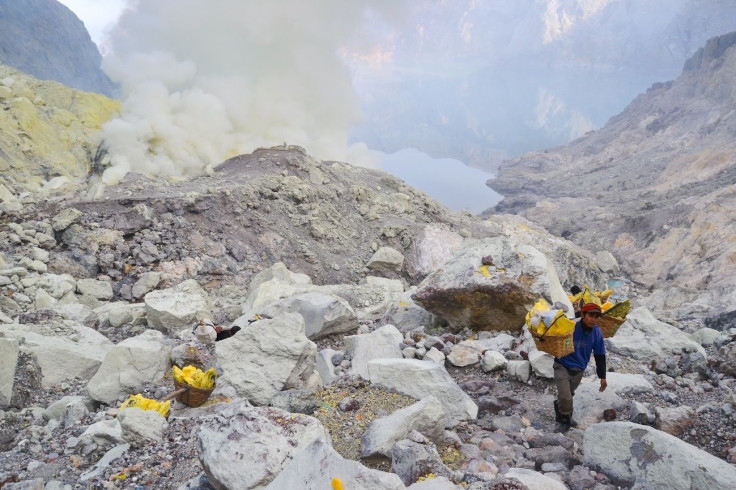
Daybreak sends cotton-candy clouds dancing across the volcanic peaks of Ijen Plateau in hues of pink and purple. In this surreal early morning light, the full scale of Ijen's sulfur mining operation finally comes into view.
It's a sight reminiscent of the early 1990s computer game "Lemmings." Men march one-by-one along the lip of Ijen crater, file down a perilous path into the steam-covered chasm, break up sulfur into basket-size chunks and march the yellow gold back up the vertical path away from the crater's milky green lake.
This work plays out against a hellish landscape bisected by a heavenly lagoon. Yet, Ijen's crater belies a sinister secret: It's the largest acidic lake on planet earth with a pH of 0.5 [similar to battery acid].
Escaping volcanic gasses are channeled through a network of ceramic pipes along the lake's edge to condense the molten sulfur into a minable material. Toss into the poisonous brew some lethal egg-like fumes, and Ijen is easily one of the most dangerous workplaces on the planet.


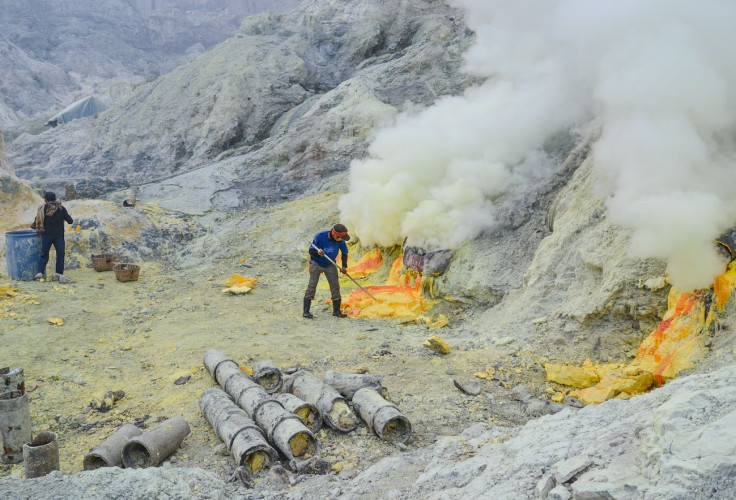
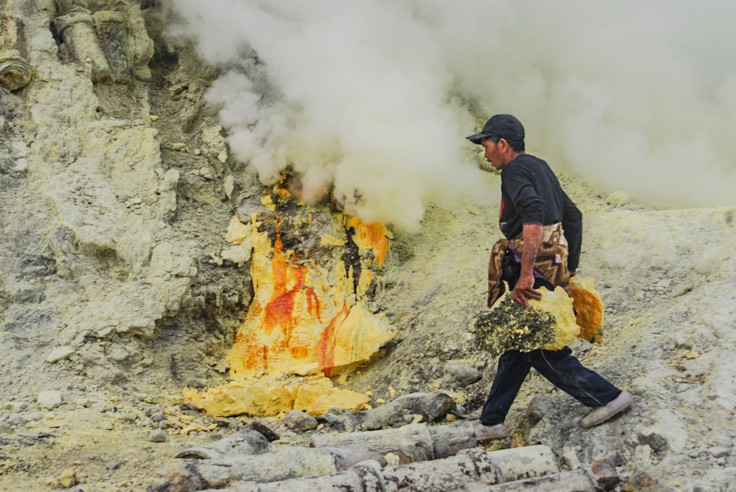
The sulfur miners of East Java make a decent salary by local standards, but they bear the scars of years spent teetering on the edge of life and death. There are the obvious affects: the burns, the sores, the missing teeth, the incessant coughing. And there are the less obvious ones: the poisoned lungs, the squashed shoulder bones.
Some six-dozen miners are said to have perished at Ijen over the past four decades when fumes billowing out of fissures in the rock overpowered them. Though this murky air looks like steam, it's actually highly concentrated hydrogen sulfide and sulfur dioxide gases that can burn a miner's eyes and throat and dissolve his teeth.
These miners have little in the way of protection from the elements, though they would tell you otherwise. "My sarong keeps me safe when the smoke comes," Addis says, showing me his tattered scarf. Addis and Sukarno also wear cheap rubber boots to prevent burns [though others plying this path do so in as little as beach sandals] and say they feel healthy and strong. They add that their coughing is from the cigarettes they smoke to pass the time.
Time for these miners, after all, is but a ticking bomb. Researchers say that workers exposed to sulfur over long periods of time have a life expectancy of only 30 years.
Addis is 33 and has been working at the sulfur mine for four years, but he doesn't plan on stopping anytime soon. "I have a wife and three kids in my home in Banyuwangi," he says. "I work for them."
Sukarno is a decade older than Addis and produces small yellow turtles out of molten sulfur to earn an extra income. He says he makes a decent living mining here and selling his trinkets for a dollar to the curious tourists who come to Ijen in search of nature, but leave in awe of the volcano's resident population of sulfur-mining superhumans.
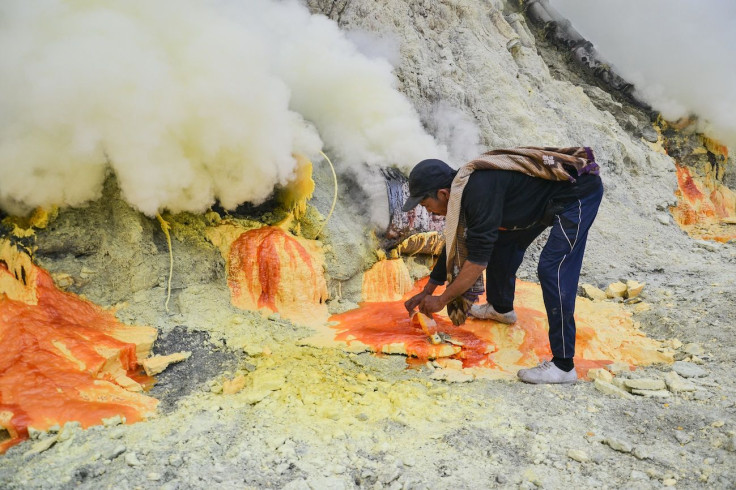
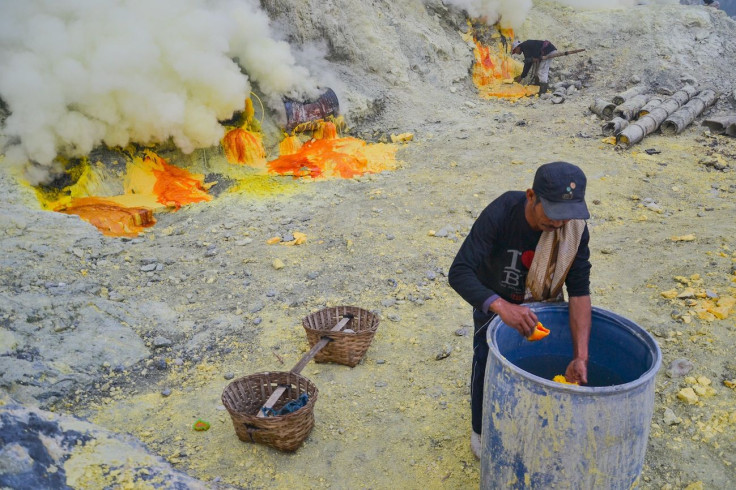
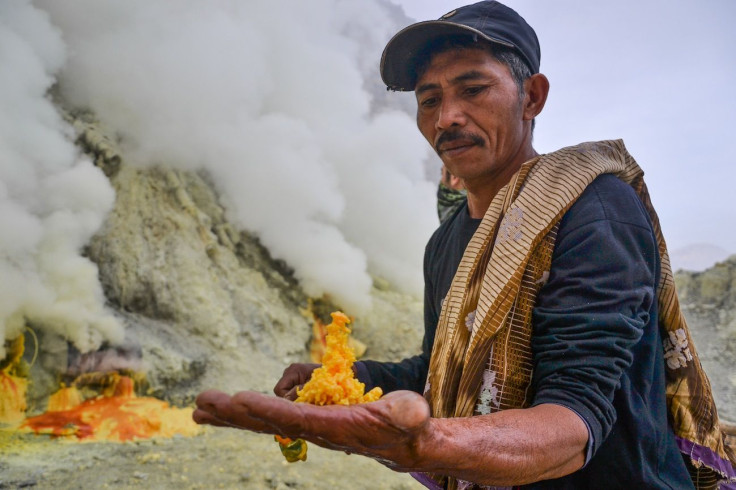
The sulfur hand delivered from the bowels of Ijen crater will find its way into your cosmetics, your matches and the fertilizer you put on your lawn. It will refine the sugar you put in your tea, set off your New Year's Eve fireworks and pack the powder that fills your army's guns.
Of course, Ijen isn't the only place in the world that you'll find this chemical element, but Java's sulfur miners are the last of a dying breed that once worked volcanoes from Chile to New Zealand and Italy. The danger of eruptions and the advent of new processes led to the closure of all similar operations outside of Indonesia by the end of the 19th century.
Similar modernization has been suggested at Ijen, too, but it was the miners themselves who actually protested against it. The reason: hordes of domestic tourists [and a few intrepid foreigners] provide theses miners with additional income as they serve as guides, photo subjects and trinket-sellers.
Lost as I may have been earlier in the day, my being found was no coincidence. It was simply good business by two men who rightfully believe that they deserve a little bit of credit for having what is, perhaps, the hardest job in the world.
© Copyright IBTimes 2025. All rights reserved.






















